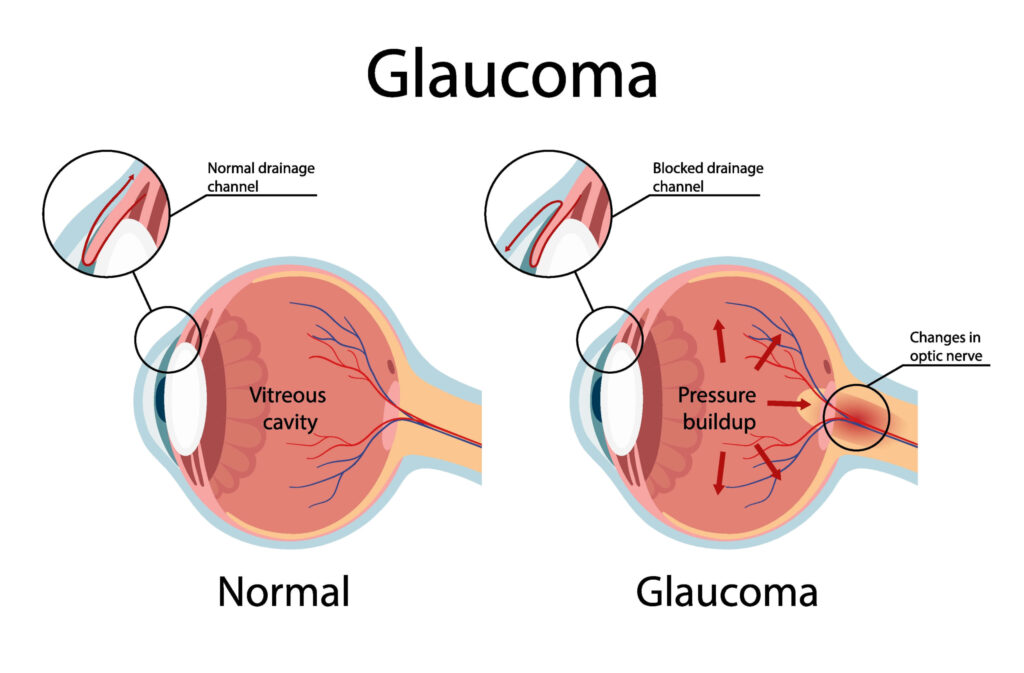
does glaucoma have a cure
Unfortunately, the answer is no, glaucoma does not have a cure.
Here’s what the research consistently indicates:
- No Cure: Currently, there is no way to cure glaucoma or reverse the vision loss that has already occurred due to optic nerve damage.
- Irreversible Damage: The damage to the optic nerve caused by glaucoma is permanent. Once vision is lost due to glaucoma, it cannot be regained.
- Management is Key: The primary goal of glaucoma treatment is to manage the condition, lower intraocular pressure (IOP), and prevent further damage to the optic nerve, thereby preserving your remaining vision. Early diagnosis and consistent treatment are crucial for slowing or halting the progression of the disease.
How Glaucoma is Treated (to prevent further vision loss):
Treatments focus on lowering the pressure inside the eye (intraocular pressure), which is the main risk factor for most types of glaucoma. Options include:
- Eye Drops: These are the most common initial treatment. They work by either:
- Decreasing the amount of fluid the eye produces.
- Improving the outflow of fluid from the eye.
- Several different types of eye drops are available, and sometimes a combination is prescribed.
- Oral Medications: In some cases, oral medications (like acetazolamide) may be prescribed, especially in emergencies to rapidly lower eye pressure.
- Laser Treatment:
- Trabeculoplasty: Used for open-angle glaucoma, a laser is used to improve the drainage of fluid.
- Iridotomy: Used for angle-closure glaucoma, a laser creates a small hole in the iris to help fluid drain.
- Cyclodiode Laser Treatment: Used to destroy some eye tissue that produces fluid, reducing pressure.
- Surgery: Recommended when eye drops and laser treatments are not effective enough.
- Trabeculectomy (Filtering Surgery): Creates a new drainage pathway for fluid to leave the eye, forming a “bleb” (a small pocket) under the eyelid where fluid is absorbed.
- Glaucoma Drainage Devices (Tube Shunts): A tiny tube is implanted in the eye to drain excess fluid to a collection area.
- Minimally Invasive Glaucoma Surgery (MIGS): Newer procedures that involve tiny incisions and devices to improve drainage, often done in conjunction with cataract surgery.
Promising Research, But No Cure Yet:
While there is no cure, research is ongoing and there are exciting advancements in understanding and treating glaucoma. This includes:
- New Medications and Delivery Systems: Such as sustained-release implants that deliver medication over a longer period.
- Genetic Research: Identifying genes associated with glaucoma to improve diagnosis and potentially target treatments.
- Gene Therapy: Investigating the potential of gene therapy to deliver genes that might slow or halt glaucoma progression or even regenerate damaged optic nerve cells. Harvard Medical School scientists have shown success in reversing glaucoma-induced damage and restoring vision in mice using gene therapy, offering significant hope for future human treatments.
- Stem Cell Therapy: Exploring the use of stem cells to regenerate damaged optic nerve cells.
In summary: Glaucoma is a serious, progressive eye condition. While there is no cure to reverse existing damage, current treatments are highly effective at controlling the disease and preventing further vision loss, especially with early diagnosis and consistent management. Regular eye exams are vital for early detection.
